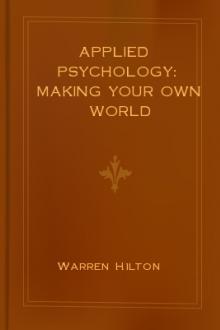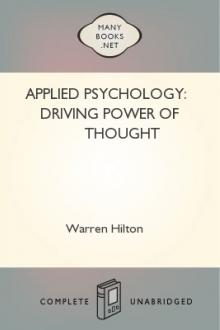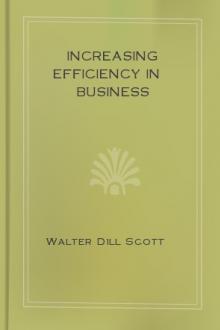Applied Psychology: Making Your Own World by Warren Hilton (easy books to read TXT) 📕

- Author: Warren Hilton
- Performer: -
Book online «Applied Psychology: Making Your Own World by Warren Hilton (easy books to read TXT) 📕». Author Warren Hilton
The other aspect of the Sense-Perceptive Process has to do with the mental interpretation of environment.
Both these aspects are distinctly practical.
You should know something of the weaknesses and deficiencies of the sense-perceptive organs, because all your efforts at influencing other men are directed at their organs of sense.
You should understand the relationship between your mind and your environment, since they are the two principal factors in your working life.
CHAPTER III
SENSORY ILLUSIONS AND SUGGESTIONS FOR THEIR USE
[Sidenote: Unreliability of Sense-Organs]
Figure 1 shows two lines of equal length, yet the vertical line will to most persons seem longer than the horizontal one.
[Illustration: FIG. 1.]
In Figure 2 the lines A and B are of the same length, yet the lower seems much longer.
[Illustration: FIG. 2.]
Those things lo





Comments (0)